Energy savings and buoyancy movable floor
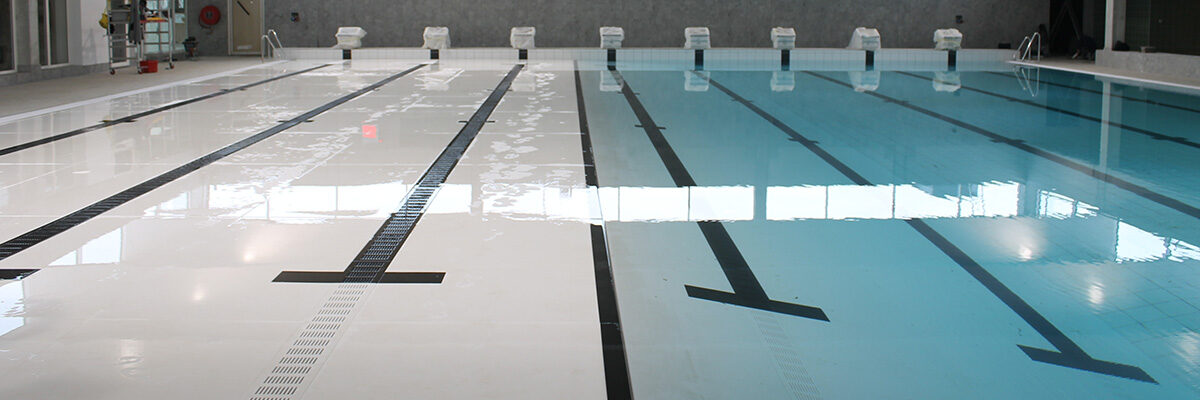
Swimming pools are a great way to relax and keep fit, but they can also consume quite a bit of energy. One way to reduce pool energy consumption is by installing a movable pool floor. How can a movable pool floor contribute to energy saving and sustainability? A movable pool floor is an innovative solution that allows the pool to be used at different depths. This offers many advantages, including more flexibility in the use of the pool and improved safety for children and non-swimmers. Another advantage of a movable pool floor is that it can highly contribute to energy savings.
Basically there are two different mechanisms which make a movable pool floor work. One way is to push the floor up and pull it down with a system controlled by electrical motors which controles a spindle or a scissor system. The best and most economical way, however, is to have a movable pool floor which floats and only needs to be pulled down. This is best done with a hydraulic cylinder system pulling the floor with cables as there is no need for electrical or electro mechanical components in or close to the water. The big advantage of a floating floor is that it is extremely stable (160 kilos per m2!) as it is supported by buoyancy blocks which are evenly spread underneath the total surface of the floor. This makes it possible to have a flat surface in the largest pools and is therefore a stable and save solution for large pools which have a large span.
An important side effect is that the floor can be used as an energy saver as well. A floating floor system creates the largest insulation value of all movable floor systems. When the floor is set level with the platform of the pool it will isolate the pool water which keeps the heath and the chemicals in the pool. It doesn’t need much explanation that this is a money saver and because of the high isolation capacity of the insulation material where the buoyancy material is made of the pool is isolated when the floor is in the energy saving position. An example of a self-floating and insulating movable floor is the Variopool floor.
Share
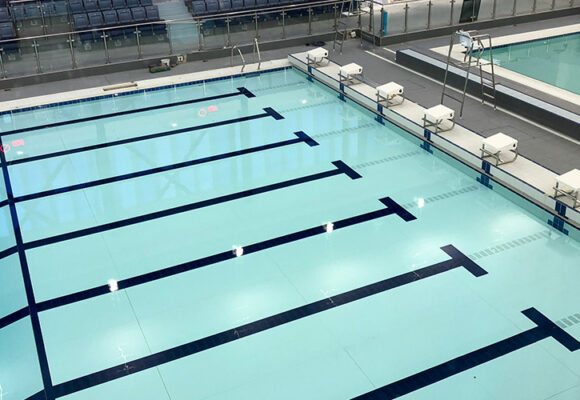
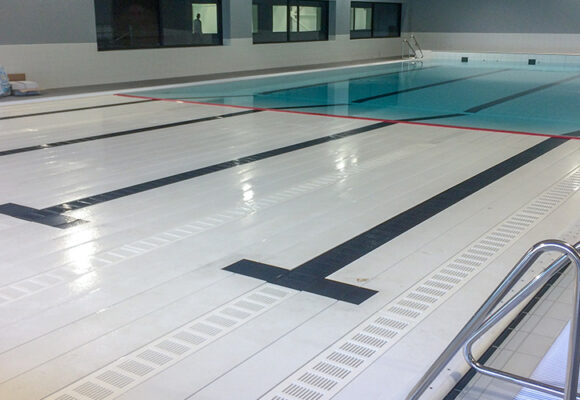
Buoyance of a movable floor
The reason why a self floating floor has a high insulating capacity is that the buoyancy blocks are made of insulating material such as polystyrene and the total pool surface is closed by polypropylene plates which have a good insulating capacity as well which give a double insulating capacity. Also when the pool is in the highest position a layer of air is created between the floor’s top deck and the actual water level. This layer of air basically is an extra insulation component. Next to this the edge of the movable floor is totally provided by a rubber buffer which closes the last opening between the pool walls and the movable floor.
You can compare this with a window with or without rubber insulating material, the difference is huge. These materials are very good at retaining heat, keeping the pool water warm and prevents the chemicals from evaporating . This means the pool’s heater has to run less often and for less time to keep the water at the desired temperature and that less chemicals are used to keep the pool water at the right quality level. This leads to significant savings on energy and chemical bills. Up to 30% on the energy bill and up to 25% on the chemical consumption. It is not difficult to make a business case where the return of investment of a floating movable floor is earned back in a short period of less then 10 years.
And when you take into account that a floating movable floor has a lifetime of 25 years when properly maintained, a lot of money can be saved and the environmental reduction of energy and chemical usage is high.
When the pool is not in use it is a save way to cover the pool with a movable floor. When the floor is set level with the platform it prevents people from accidently falling into the pool which prevents people from drowning. Typical pool covers which prevents the pool from losing heat and chemicals are open systems with less insulating capacity then a movable floor. A side effect is that they are open and have no capacity to support the weight of an animal or a person. And when someone accidently gets in the pool the danger is that you will be stuck underneath the pool cover and cannot get out easily. We all know the examples where people think it is save to step on the pool cover because it looks stable but you sink immediately down and will slide to the openings between the cover. With the use of a movable floor this is all prevented and it has a much better insulating capacity.
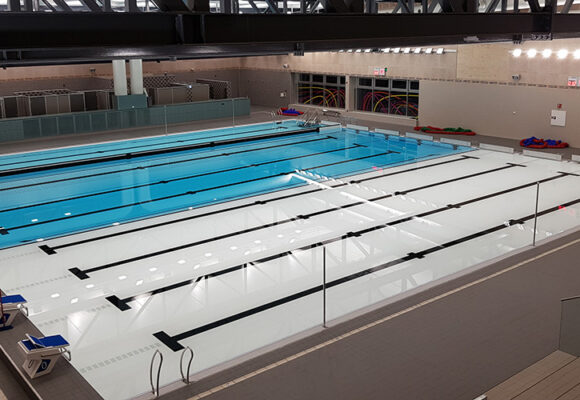
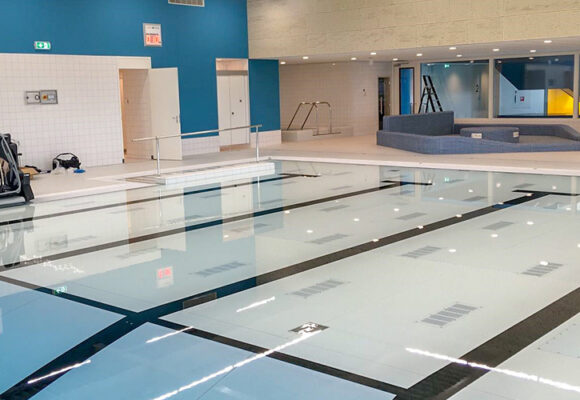
Strengten pool businessmodel and revenue.
Another important advantage of a movable pool floor is that it can be used to maximize the pool area. One pool can accommodate different groups with different swimming needs, by using a movable pool floor. Installing a movable floor directly results in decreasing the amount of pool water needed for different swimming activities. The need for less water means that means less energy is needed to heat the water, less water evaporation and less chemicals are needed to maintain the water quality. Moreover, the pool can be covered when not in use, preventing evaporation of water and preserving the heat in the water. A movable pool floor in an outside pool can even be used to heat the pool with solar energy. By lifting the bottom when the sun shines, the water can be heated by solar heat. This means less energy is needed to heat the water, contributing to energy savings.
However, the advantages of a pool floor are even larger. Using a movable pool floor enable swimming pool buildings or Leisure centers to be built in a much more compact way. This results in significantly lower initial building costs and highly effects the total energy cost and ecological footprint of the building itself over the years. As a result also annual maintenance cost can be kept low, creating a real liftetime advantage for the pool operator or city council and eventually all the users of the pool.
In addition, It is from our experience that the floating floor system has an average lifetime of 25-30 years, when maintained well. As there are no electrical or electromechanical components inside the pool, the wear and tear is rather limited and no extra chemical components need to be used to operate the pool floor system. Not rarely we see other systems to be replaced by this floating technique after only 10-15 years of operation. Taking this into account, this long lifetime also positively contributes to the total ecological footprint and business model.
Return on investment
A movable pool floor offers many advantages, including greater flexibility, improved safety and energy savings. By using insulation materials, efficient use of space and the use of solar energy, a movable pool floor highly contributes to a more sustainable and energy-efficient pool. The return on investment of a movable pool floor is huge. Whilst saving building costs, saving energy consumption and cost during the full technical lifetime and creating more flexibility to accommodate different target groups, a movable floor saves costs and increases revenue. All that can be realized with a low carbon footprint.
Installing a movable floor, is not about buying a technical product. It is all about in keeping people fit, against the lowest ecological footprint and best economical businessmodel.